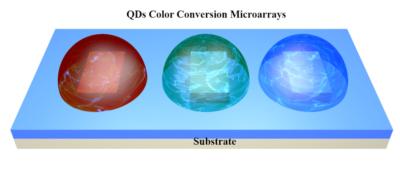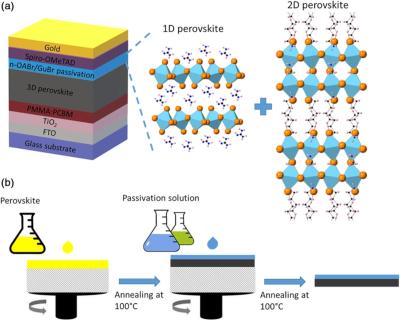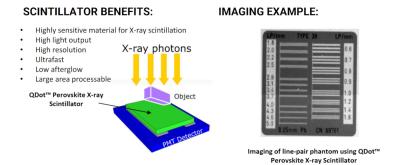Perovskite-Info weekly newsletter
Published: Tue, 06/14/22
The Perovskite-Info newsletter (June 14, 2022)
Cannot read this? View it online here
Researchers create perovskite quantum dot microarrays for improved displays
Researchers from the Beijing Institute of Technology and MIIT Key Laboratory for Low Dimensional Quantum Structure and Devices have developed perovskite quantum dots microarrays with strong potential for quantum dots color conversion (QDCC) applications, including photonics integration, micro-LEDs, and near-field displays.

QDCC is considered a versatile way to achieve full-color organic light-emitting diodes and micro-light-emitting diodes displays. QDCC provides a wide range of color performance and easy integration. However, conventional QDCC pixels, fabricated by the commonly used method of inkjet printing, tend to be too thin to achieve efficient color conversion. The conventional combination of quantum dots and coffee-ring effects or puddle of particle-laden liquid that occur after evaporation, lowers the light conversion efficiency and emission uniformity in quantum dot microarrays. This also contributes to blue-light leakage or optical crosstalk, where unwanted coupling occurs between signal paths.
Hyundai Motor to work with UNIST researchers to develop perovskite solar cell for vehicle solar roof
Recent reports claim that South Korea's Hyundai auto group has teamed up with a research team at Ulsan National Institute of Science and Technology (UNIST) to develop new perovskite solar cells that can charge vehicles while they are under the sun.
Hyundai Motor already released solar roofs with silicon solar panels, but their acceptance has been slow without improvements in weight and efficiency, as silicon solar cells are quite heavy and have technical limitations in improving efficiency. In a recent ceremony, the Ulsan National Institute of Science and Technology (UNIST) opened a joint laboratory with Hyundai to develop high-efficiency, large-area perovskite-silicon tandem cells and apply them to solar roofs. The joint laboratory will operate for three years until May 2025.
DOE awards funding for 3 perovskite-related PV projects
The U.S. Department of Energy (DoE) has selected 19 projects for which to grant a total funding of $6 million, to pursue innovative, targeted, early-stage ideas in solar energy research and development. The projects were selected through the Solar Energy Technologies Office (SETO) Small Innovative Projects in Solar (SIPS) 2022 Funding Program.
Projects were awarded in two solar energy research areas: PV and concentrating solar-thermal power (see CSP winners here). PV projects will improve power conversion efficiency, energy output, reuse and recycling processes, service lifetime, and manufacturability of PV technologies. Of the 19 selected project, 3 were perovskite-related.
Researchers design novel passivation approach to achieve perovskite solar cells with efficiency of over 23%
Researchers from The Australian National University, Flinders University, University of New South Wales and The University of Sydney have developed a perovskite solar cell with a novel passivation process based on the use of guanidinium (Gua) and octylammonium (Oa) spacer cations.

A schematic showing the device structure and the surface incorporation of GuaBr, OABr, and their mixture. Image from RL Solar
The team claims that guanidinium salts can improve the performance of the perovskite film, as guanidinium ions are capable of penetrating into the bulk of the perovskite material and localizing at the grain boundaries (GBs).
Quantum Solutions starts offering evaluation samples of next-gen perovskite-QD based X-Ray Scintillators
UK-based Quantum Solutions started to ship evaluation samples of its next-gen perovskite quantum dots (pQD) X-Ray Scintillators. The company says that these scintillators offer very high sensitivity, high light output, high resolution, low afterglow and can be processed on large areas.

Quantum Solutions started developing these materials in 2020, and already managed to increase the light output (brightness) 10 times over. The company says that this is due to the unique perovskite structure that allows to tune the properties by composition, particle sizes/shapes, ligands, etc. The product already matches the performance of commercial CsI(Tl) and GADOX scintillators. The company is working with key customers in the medical field and non-destructive testing field, and are continuing to develop and customize the product.


